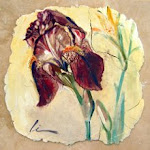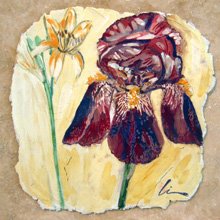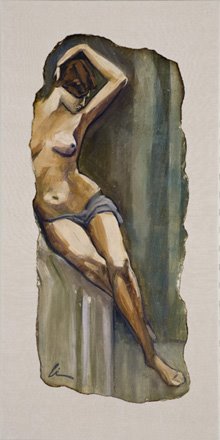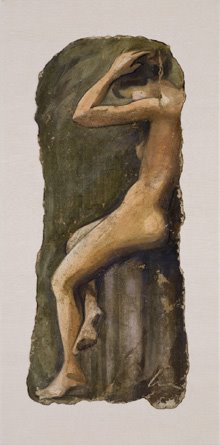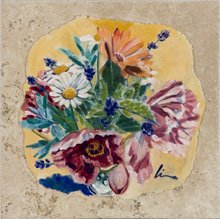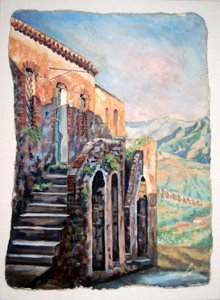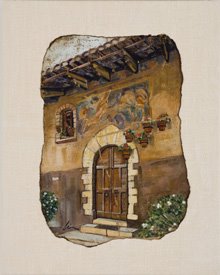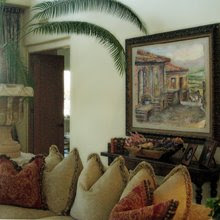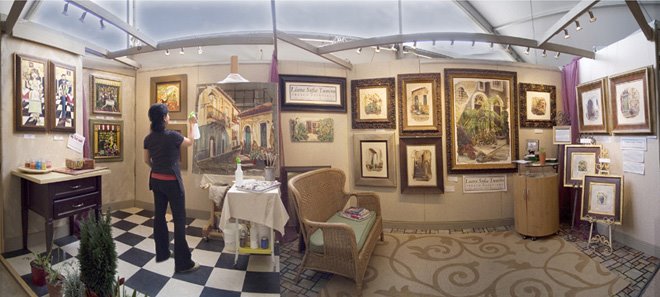
As I prepare to begin my next large fresco I will take you through some of these challenges as they don't stop with just the materials required. Above, below and in the sidebar you will see 3 fresco studies I have completed in preparation for a much larger fresco of the same subject that I will be commencing soon. The reason I do these small studies is the time factor I mentioned in an earlier blog post. In large works I benefit greatly if I have had a chance to paint a smaller version first, always remembering that I must acheive my desired result before the plaster I am working on has a chance to dry, I guess this would be challenge #1.
Above you can see an example of challenge #2. Upon completion of any fresco I have to consider that the painting will dry anywhere from 10-25% lighter depending on the amount of lime paste (bianco san giovanni) I have added to my palette. Take a look and notice how the whites have popped, and the shadows have lightened somewhat in this newest fresco titled "Via Giacomo Under a Pale Blue Sky."











